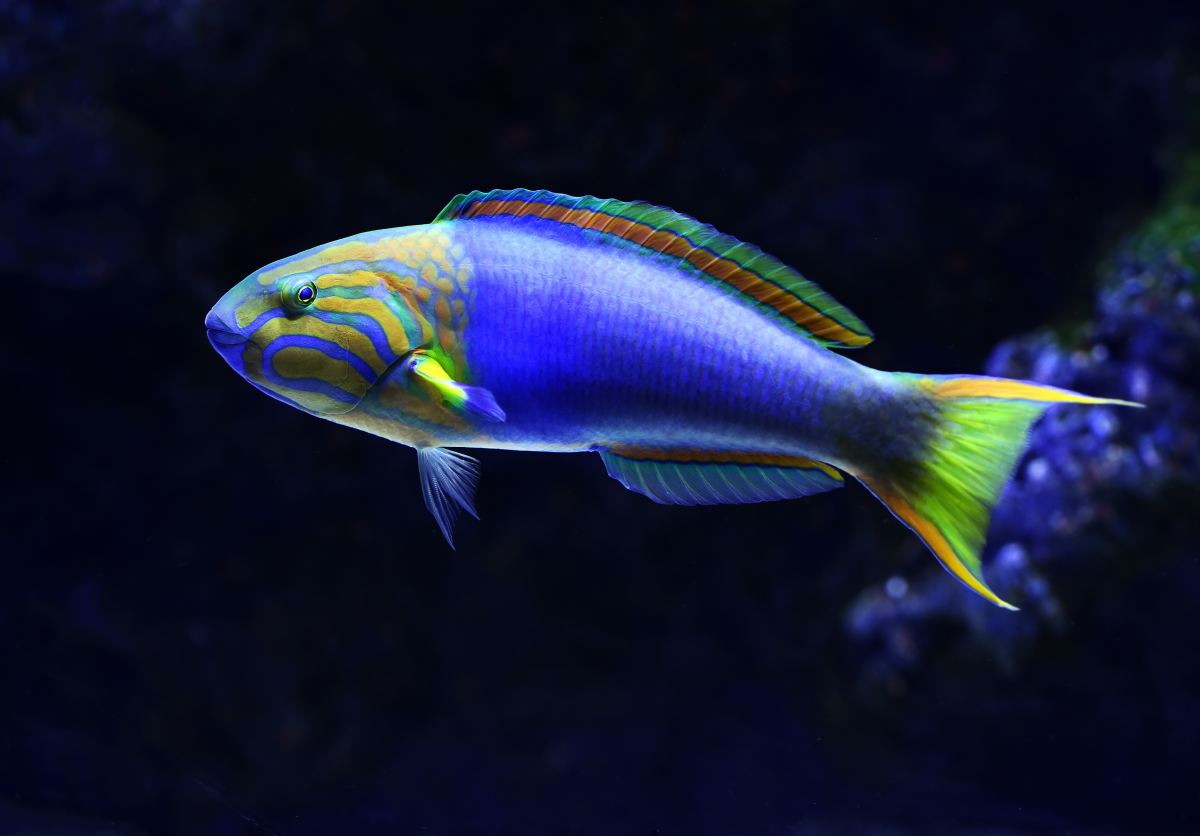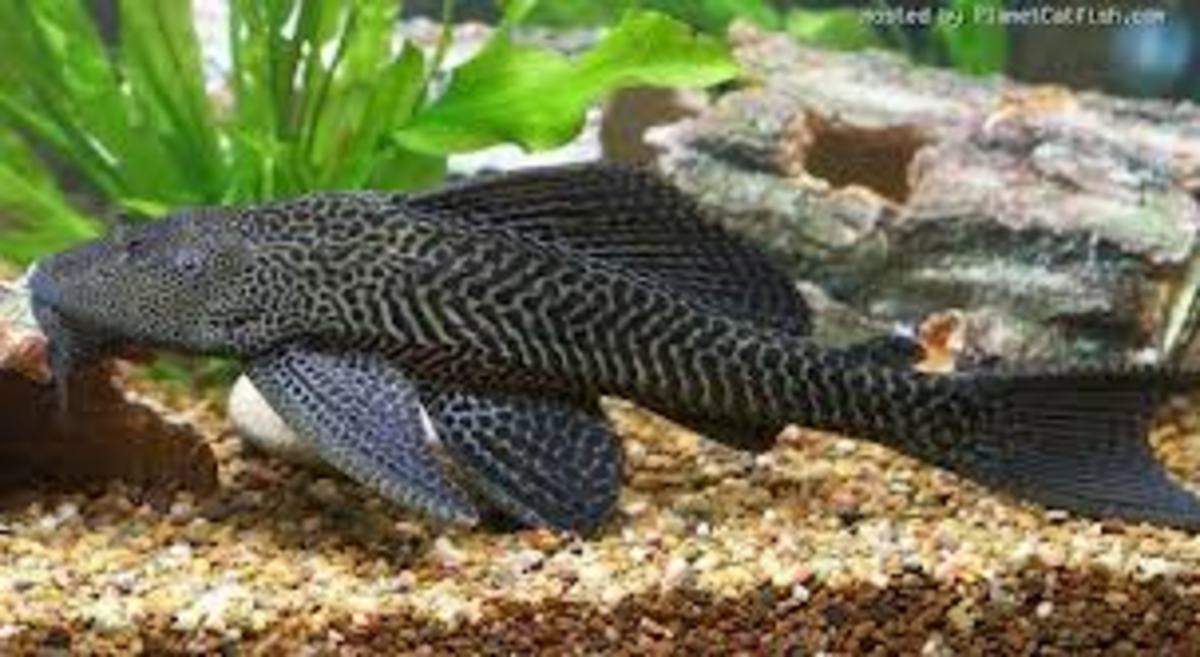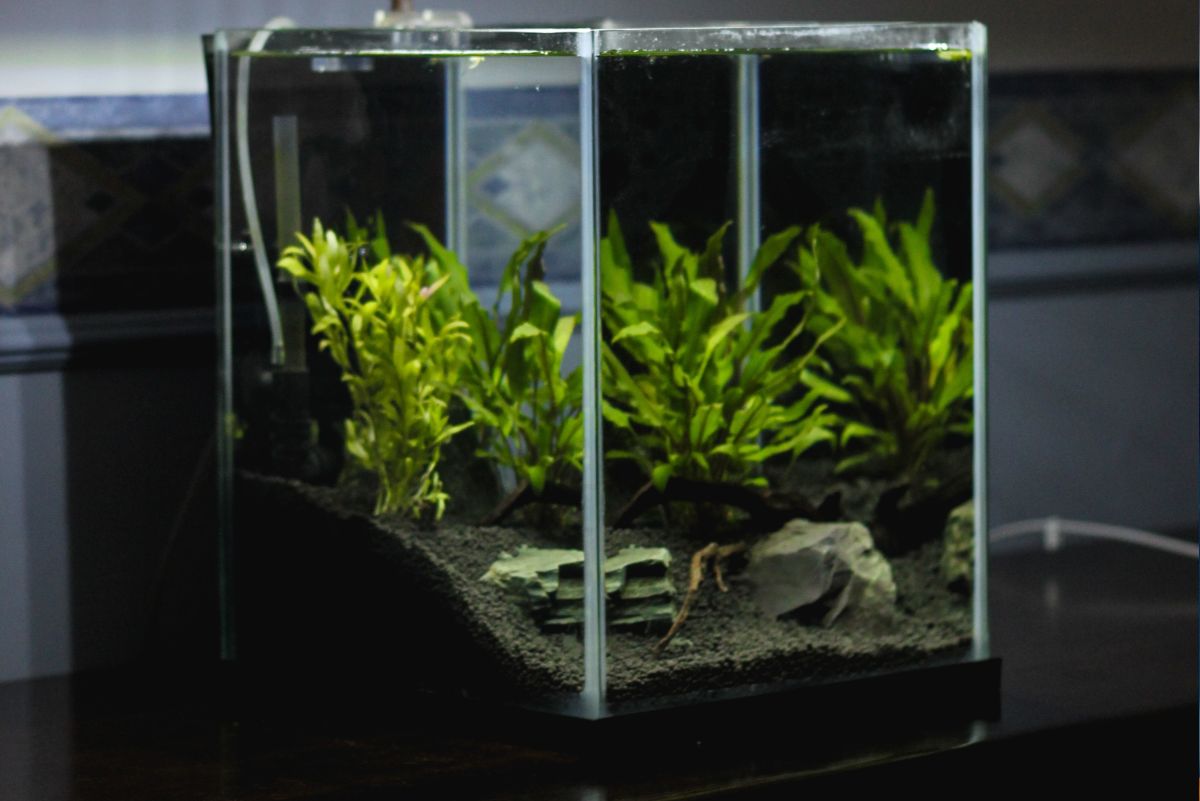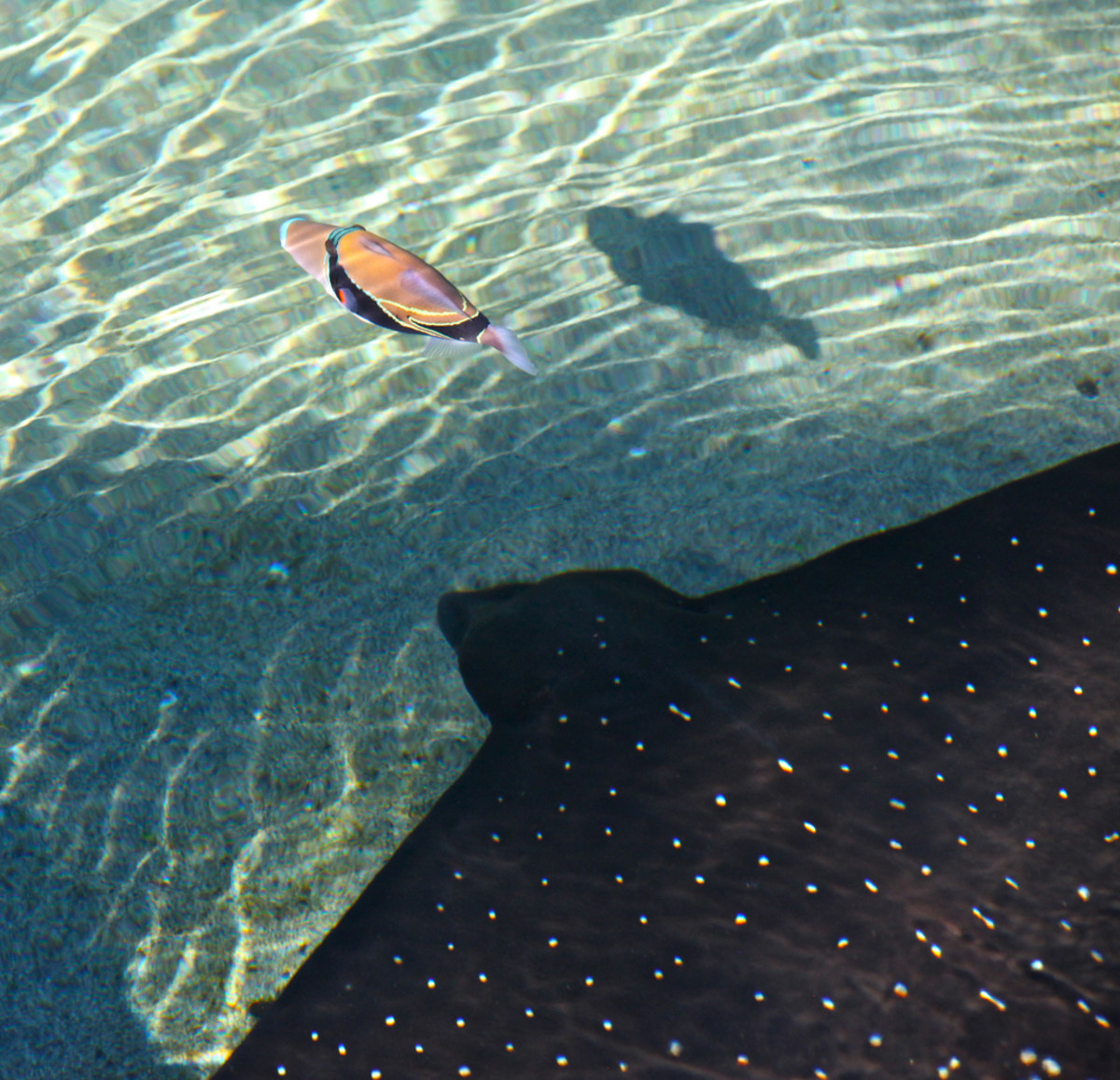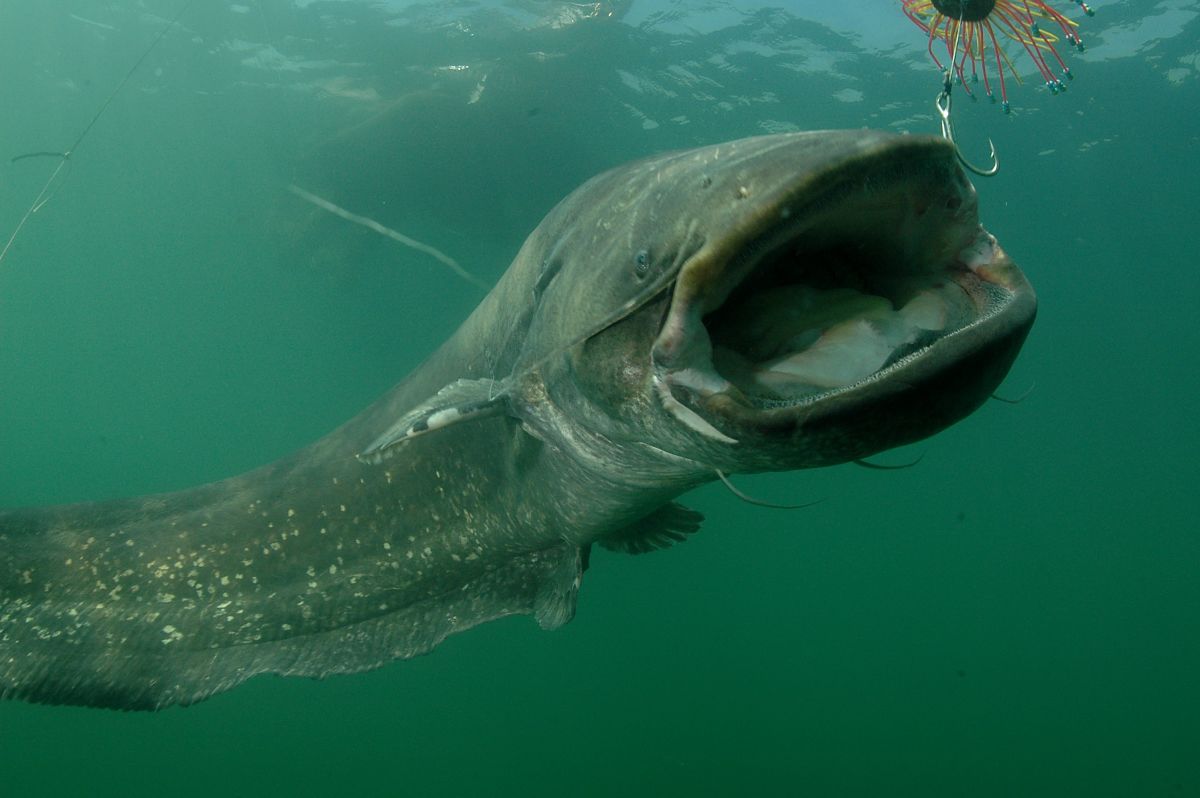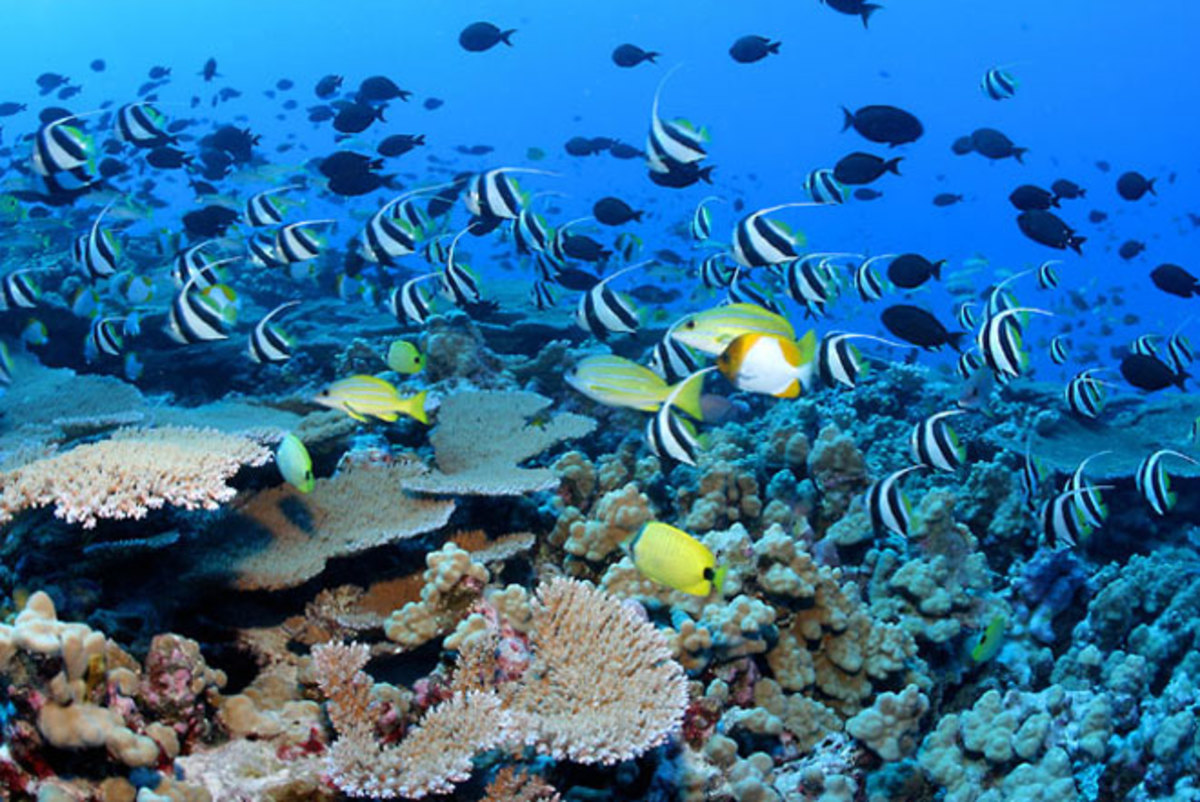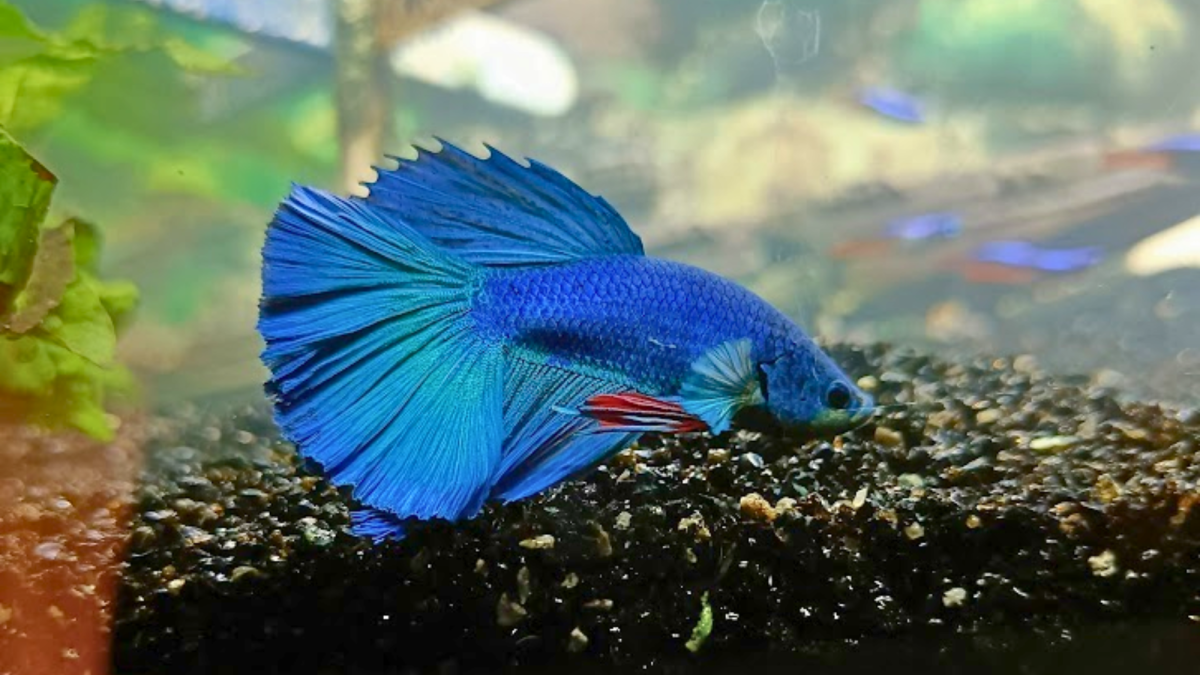Saltwater aquarium fish: the Picasso Triggerfish
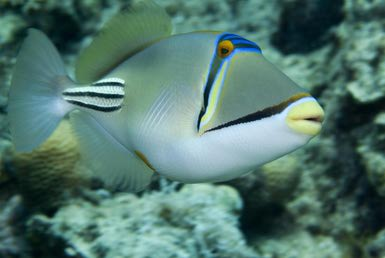
Triggerfish get their name from a dorsal spine which normally lies flat on the top of their bodies. When they are alarmed or aggressive this fin pops up and looks like a trigger on an upside-down revolver. The spine is used to lock the fish into rocks and corals where it sleeps for the night.
The first triggerfish to gain popularity for aquariums is the Picasso trigger. And it is still one of the most popular triggerfish to collect. In the 1970s, Bonnie and Bob Sackett used to import saltwater aquarium fish for resale to pet stores. When they started importing from Hawaii, they saw their first Picasso triggerfish and quickly adopted him for their home aquarium. They named him Scoop, since he looked like the intake on a jet plane. Saltwater aquaria were a new phenomenon at the time, and all people involved shared knowledge and experience with each other, since there were no marine-animals-for-dummies books. While Scoop was unusual, it was easy to learn how to keep him – Scoop got rid of all other fish in the aquarium except a moray eel who was bigger than him, and survived on brine shrimp, meat and chopped fish; pH changes and water changes could not keep him down. He was by far the hardiest marine fish the Sacketts ever kept.
At that time, the term “Picasso triggerfish” had not been coined – they were referred to as huma-humas. The actual Hawaiian name is Humuhumunukunukuapau'a, and the full name was popularized in a song from the swing era. This Hawaiian name means, approximately, “fish with a pig-nosed face.”
All triggerfish are shaped like an almond, or diamond, and have the trigger-like dorsal spine fin center top. What distinguishes the Picasso is a set of stripes between its independently-working eyes, over the top of the head, which alternate teal and blue or purple. There is a swipe of yellow leading from the small mouth to right below the eye on its cream-colored body. The rest of the fish may vary, but it always appears to have been painted, hence the name Picasso.
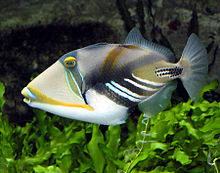
The Picasso triggerfish offers a great deal of entertainment, especially if they share the tank with compatible species. The Picasso has sharp teeth which are used for moving rocks, but they will also use them aggressively if threatened, so be careful when working in the aquarium. The teeth are ever-growing, so in the wild they eat a lot of hard-shelled shrimp to grind the teeth down. In a tank, they may do this with coral and rocks. They use their mouths to blow over invertebrates and attack them in their soft undersides, and can become very aggressive when eating, so be careful during feeding time. Often they will actually sleep on their sides.
The best way to know how to keep a fish is to understand its native environment. From the family Balistidae, the scientific name Rhinecanthus aculeatus was given to this fish by Linnaeus in 1758. Other common names for the Picasso trigger are Humu-humu, Aculeate, Lagoon, Prickly, Pig-nosed, Painted, Whitebanded and Blackbar triggerfish.
These fish can be found in the wild from Hawaii and the Marquesas Islands, through Polynesia, to Micronesia, Melanasia and the Philippines, as well as the coast of China, and in the East Indies. Their waters include the Pacific Ocean, Indian Ocean, coast of Africa and the Red Sea. To meet these water conditions, the tank should be 72-78° F, with a dKH of 8-12, pH 8.1-8.4, sg of 1.020-1.025.
The Picasso triggerfish should not be kept in a reef tank; he would eat all the smaller reef fish. He prefers the shallower waters inside and outside a reef, subtidal reef flats and protected lagoons where there are lots of rocks, crevices and caves to hide in and search for food. His jaws are strong enough to move rocks and crush coral, and he is known to move rocks around to build hideouts. But they also need open water to swim in. For this reason, the tank should be a minimum of 75 gallons with plenty of room and shelter in the form of rocks and caves. Triggerfish are territorial and will show much less aggression if they can each have their own space. He eats a wide variety of crustaceans and invertebrates, so these should be kept out of his tank unless supplied for food. While they may come into the tank at about three inches, the Picasso trigger usually grows to nine inches and can even reach a foot long. Even if the habitat looks great, the Picasso will rearrange the landscape as it wanders in and out of the caves.
The primary like squid, shrimp, krill, mussels, worms, corals, tunicates forams, eggs, starfish, sea urchins, shellfish, with a smattering of spirulina, algae and fried seaweed. Because of their small mouths and foraging behavior, these fish should be fed a little bit, very often, at least two to three times a day. If the fish starts fading, the diet needs to be enriched.
The predators of Picasso triggerfish are larger triggerfish and, of course, mankind. While they will eat smaller fish, the Picasso trigger is the most peaceful of the triggers. They tend to do better without another Picasso trigger in the tank, but protein eaters such as groupers, surgeonfishes and basses would be welcome, as well as some eels and puffers. Some good choices for tank mates are snowflake eels, sailfin tangs and lionfish. Having other triggerfish (a single one of each species) can keep the tank entertaining as long as the tank is big enough. The Picasso will tend to be the king of the hill, and rustling for the best cave will occur whenever the rocks are rearranged.
There is no way to sex Picasso triggerfish, but in the wild the males seem to be larger and will have multiple females in its territory. The female builds a nest (more like a pit in the sand) and cares for the eggs and newly hatched juveniles. Breeding in aquaria is unsuccessful.
The Picasso triggers are susceptible to most saltwater fish disease and respond well to most of the standard medicines and treatments. Quarantine any new arrivals for a period of 2 - 3 weeks before introducing them into your main tank.
Since the triggers are very hardy and have a life span of five to ten years, the Picasso Triggerfish offer a very unique and entertaining tank for a long time. Their beautiful markings and king-of-the-hill behaviors trigger a lot of conversations.
© 2014 Bonnie-Jean Rohner


